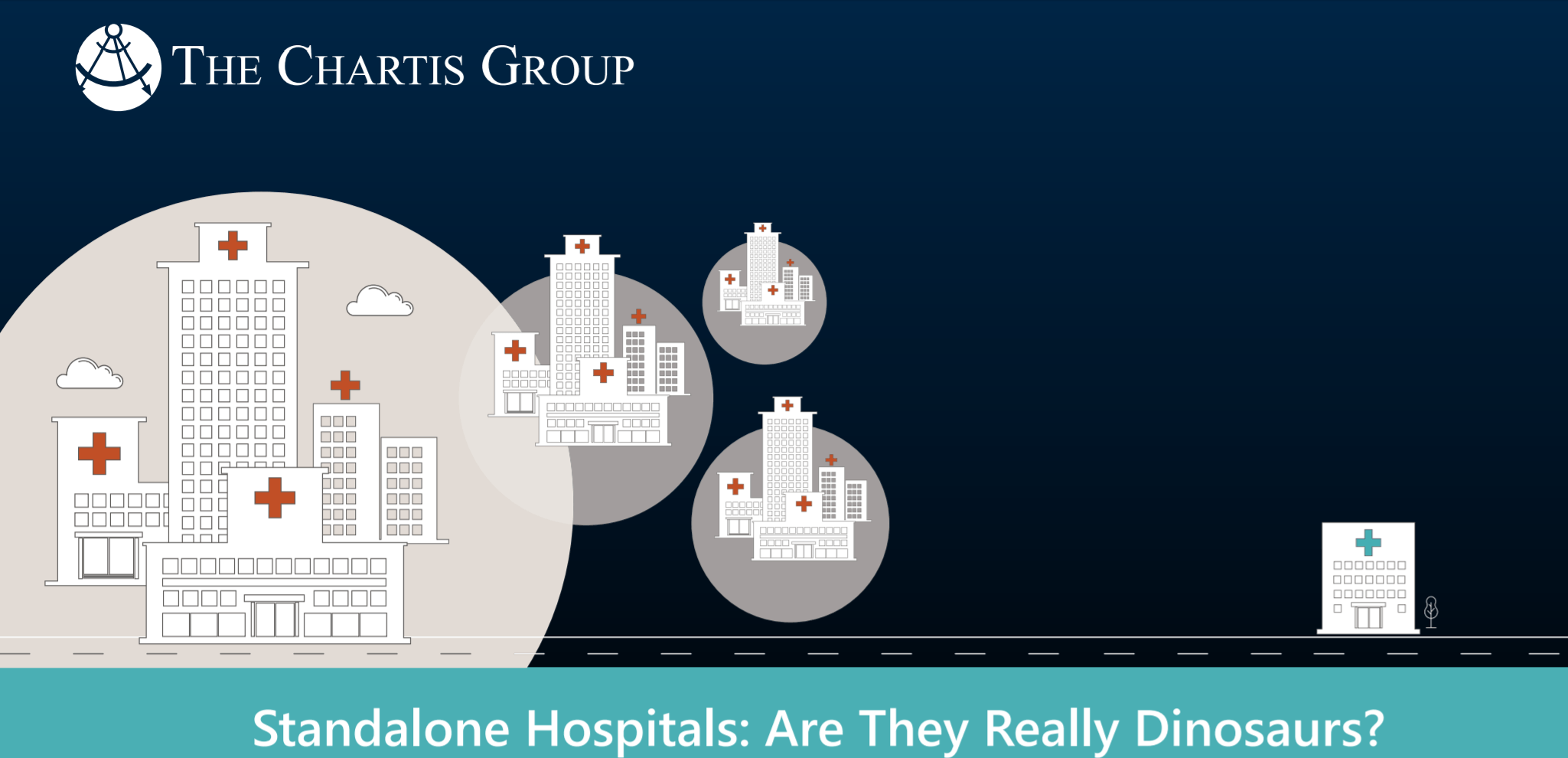
The Chartis Group shares 8 characteristics of successful independent hospitals and provides an assessment for hospital executives.
Over the last 20 years, the percentage of U.S. hospitals over 200 beds, that are part of health systems, has risen from 56 percent to 77 percent. This trend continues as local regional and national health systems expand in search of greater scale, financial stability, and market presence. This seemingly inexorable trend towards systems expansion has caused industry observers to state frequently that standalone community hospitals are “dinosaurs.”
However, there are circumstances under which stand-alone hospitals can continue to thrive, at least for the foreseeable future, according to a new white paper from The Chartis Group, a healthcare-focused provider of advisory services and analytics to healthcare organizations. The white paper, “Standalone Hospitals: Are They Really Dinosaurs?” includes a strategic framework for executives and boards of independent hospitals to assess current positioning and future prospects.
8 Common Characteristics of Standalone Hospitals
The study found that successful independent hospitals share many of the same advantages. These market and internal characteristics enable many of the remaining standalone hospitals to meet their mission objectives, fund routine and strategic capital needs, build robust ambulatory and physician networks and fend off competition from larger systems. These eight common characteristics of standalone hospitals include:
1. The hospital is the sole or predominant community provider in the market(s) it serves.
2. The hospital is located within an attractive, stable or growing market with a favorable payor mix.
3. The hospital is of a size sufficient to promote efficient care delivery and cost management.
4. The hospital provides a wide array of profitable specialty care services and has a high case mix index, enabling it to earn favorable margins per case.
5. The hospital has a strong balance sheet, including over 200 days cash on hand and a favorable debt to capitalization ratio.
6. The hospital has built an integrated, closely-aligned physician network that is growing and well distributed across the service area.
7. The hospital benefits from strong community support, including philanthropy.
8. The hospital has created a level of “network essentiality” that enables the organization to negotiate favorable commercial and other payor contracts.
While stand-alone hospitals will continue to join local, regional and national health systems, a subset of institutions that are well-positioned across the above dimensions will continue to enjoy independence, support their communities and demonstrate the ability to thrive.
Healthcare Organizations Should Conduct Evaluation of Their Positionings and Future Prospects
“It is critical for all organizations to periodically conduct a rigorous, thoughtful evaluation of their current positioning and future prospects; they should assess the range of options that best preserve the mission and meet their needs and those of the communities they serve,” said Chris Regan, Managing Director for The Chartis Group and co-author of the study.
The assessment should involve a thorough board and executive team evaluation process that considers the following types of questions:
1. Does our institution fit the profile of a strong, independent hospital?
2. Is it realistic to think we can independently close gaps in our positioning and operational performance?
3. How should we involve the board in an objective, periodic evaluation process?

